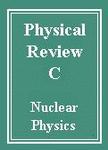版权所有:内蒙古大学图书馆 技术提供:维普资讯• 智图
内蒙古自治区呼和浩特市赛罕区大学西街235号 邮编: 010021

作者机构:Department of Physics Hebei University Baoding 071002 China CAS Key Laboratory of High Precision Nuclear Spectroscopy Institute of Modern Physics Chinese Academy of Sciences Lanzhou 730000 China School of Nuclear Science and Technology University of Chinese Academy of Sciences Beijing 100049 China Key Laboratory of High-Precision Computation and Application of Quantum Field Theory of Hebei Province Baoding 071002 China
出 版 物:《Physical Review C》 (Phys. Rev. C)
年 卷 期:2025年第111卷第1期
页 面:014320-014320页
核心收录:
基 金:Peng Huanwu Center for Theoretical Physics Innovation Youth Innovation Promotion Association of the Chinese Academy of Sciences, YIPA CAS, (Y2021414) Chinese Academy of Sciences, CAS, (XDB34000000, YSBR-088) National Natural Science Foundation of China, NSFC, (12375117, 12047503) Natural Science Foundation of Gansu Province, (23JRRA675, 20JR5RA481)
摘 要:The finite-temperature phase structures for neutron-proton superfluidity in asymmetric nuclear matter are investigated, with a particular focus on the angular dependence of the pairing gap induced by the SD13 nucleon-nucleon interaction. This angular dependence of the pairing gap results in the Cooper pair momentum in the Fulde-Ferrell-Larkin-Ovchinnikov (FFLO) state exhibiting exactly two distinct stable orientations: one orthogonal (FFLO-ADG-O) and the other parallel (FFLO-ADG-P) to the symmetry axis of the pairing gap. The FFLO-ADG-O state dominates at low asymmetries, while the FFLO-ADG-P state prevails at high asymmetries. Additionally, this analysis of normal-superfluid phase separation reveals that the angular dependence of the pairing gap eliminates phase separation in the low-asymmetry regime, whereas the Cooper pair momentum effectively suppresses phase separation at high asymmetries. These two mechanisms act in concert to significantly prevent the occurrence of normal-superfluid phase separation across the entire phase diagram, ensuring the stability of the homogeneous superfluid state over a broad range of asymmetries. These results provide new insights into the interplay between the angular dependence of the pairing gap and the stability of superfluidity in asymmetric nuclear matter.